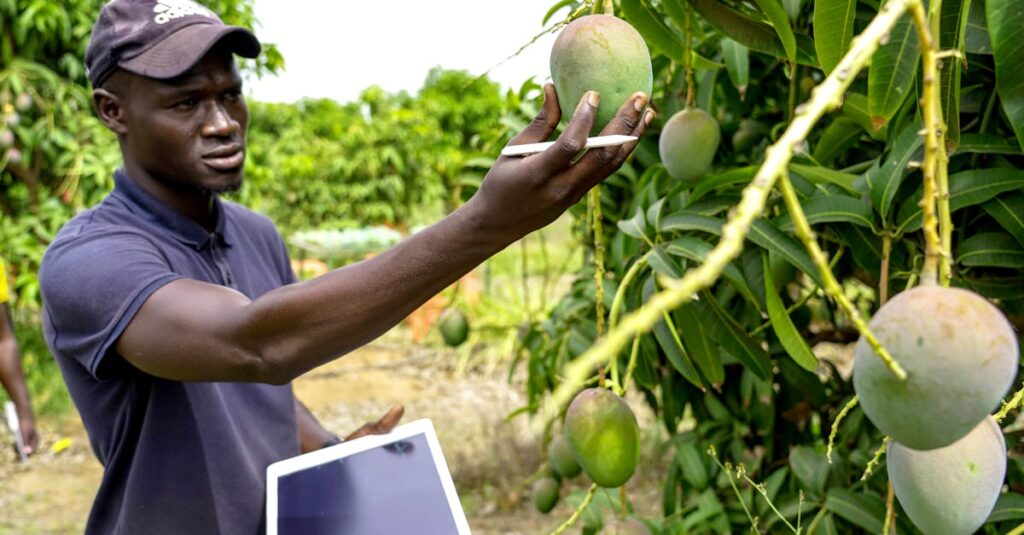Ecosystem productivity is a vital concept that reflects the health and efficiency of natural environments. It essentially measures how well an ecosystem can convert sunlight and nutrients into organic matter, which supports diverse forms of life. Understanding this productivity not only helps in assessing ecological balance but also plays a crucial role in conservation and resource management.
Scientists employ various methods to gauge ecosystem productivity, ranging from direct measurements of biomass to sophisticated modeling techniques. By analyzing factors like primary production and energy flow, they gain insights into the intricate relationships that sustain ecosystems. This knowledge is essential for addressing environmental challenges and ensuring sustainable practices for future generations.
How is Productivity Of An Ecosystem Measured
Ecosystem productivity reflects how efficiently ecosystems convert resources into organic matter. This measurement plays a critical role in understanding ecological dynamics and implications for sustainability.
Definition of Ecosystem Productivity
Ecosystem productivity refers to the rate at which producers, primarily plants and phytoplankton, synthesize organic compounds through photosynthesis. It’s quantified as gross primary productivity (GPP) and net primary productivity (NPP). GPP measures total energy captured, while NPP accounts for energy utilized in respiration. This distinction is crucial, as NPP represents energy available for consumers within the ecosystem.
Importance of Measuring Productivity
Measuring ecosystem productivity holds significant importance for several reasons. First, it aids in assessing the health and stability of ecosystems. High productivity typically indicates robust ecosystems capable of supporting diverse species. Second, it informs conservation efforts. Understanding productivity levels helps prioritize areas needing protection or restoration. Third, it plays a vital role in resource management; knowing productivity allows for sustainable harvesting practices and land use planning. Finally, productivity measurements support research on climate change impacts, revealing how shifts in temperature and precipitation affect food webs and energy flow.
Methods of Measuring Productivity
Measuring ecosystem productivity involves various methodologies that provide insights into how natural environments function and support biodiversity. The two primary measurements focus on productivity from different tiers in the food web: primary productivity and secondary productivity.
Primary Productivity
Primary productivity quantifies the rate at which autotrophs, specifically plants and phytoplankton, convert sunlight and carbon dioxide into organic matter through photosynthesis. It helps assess ecosystem health and its capacity to support life. Key methods for measuring primary productivity include:
- Direct Biomass Measurement: This technique involves harvesting a defined area and weighing the organic material produced. It provides a snapshot of productivity over a specific period.
- Chlorophyll Measurement: By analyzing chlorophyll concentrations in water samples or leaf tissues, scientists estimate photosynthetic capacity and infer primary productivity.
- Remote Sensing: Satellite imaging and aerial photography allow the observation of vegetation cover and vegetation indices, which correlate with primary production levels across large areas.
- Carbon Dioxide Flux: Techniques such as eddy covariance measure the exchange of carbon dioxide between the ecosystem and the atmosphere, offering insights into overall productivity dynamics.
Secondary Productivity
Secondary productivity measures the generation of biomass by heterotrophs, primarily consumers that derive energy from eating plants or other animals. It assesses how efficiently ecosystems transfer energy from primary producers to higher trophic levels. Key methods for measuring secondary productivity include:
- Consumption Rates: By measuring the amount of food consumed by herbivores and carnivores within a specific time frame, researchers estimate secondary productivity.
- Growth and Reproduction Rates: Tracking the growth and reproduction of consumer species over time helps determine energy transfer and biomass accumulation within the ecosystem.
- Energetic Models: Scientists often use mathematical models based on energy flow through trophic levels, allowing for predictions about secondary productivity and its implications on ecosystem dynamics.
- Stable Isotope Analysis: This technique helps trace energy flow within food webs by analyzing isotopic signatures in consumer tissues, indicating their diets and biomass origins.
By employing these methods, researchers gain a comprehensive understanding of ecosystem productivity, informing conservation efforts and management practices.
Factors Affecting Ecosystem Productivity
Ecosystem productivity reflects the complex interplay of various factors. Two critical influences on this productivity are climate and weather conditions, along with nutrient availability.
Climate and Weather Conditions
Climate and weather conditions significantly impact ecosystem productivity. Temperature, precipitation, and sunlight availability determine the rates of photosynthesis and organic matter production. Warm temperatures typically enhance metabolic processes in plants, while adequate moisture promotes growth. For instance, temperate rainforests show high productivity due to abundant rainfall and optimal temperatures, whereas deserts exhibit limited productivity because of moisture scarcity. Seasonal variations also affect productivity; spring and summer often witness increased growth rates compared to autumn and winter. Overall, climate stability supports sustained productivity, while extreme weather events disrupt ecological balance.
Nutrient Availability
Nutrient availability plays a crucial role in determining ecosystem productivity. Key nutrients include nitrogen, phosphorus, and potassium, which influence plant growth and overall productivity. Environments rich in nutrients, such as wetlands, generally exhibit higher primary productivity compared to nutrient-poor ecosystems like deserts. Eutrophication, often resulting from nutrient runoff, can lead to excessive growth of phytoplankton in aquatic systems, affecting energy flow and biotic interactions. In terrestrial ecosystems, soil composition and structure dictate nutrient retention and availability, impacting plant vigor and, subsequently, the productivity of the entire ecosystem.
Common Techniques for Measurement
Various techniques exist for measuring ecosystem productivity, enabling scientists to assess primary and secondary productivity effectively. These techniques fall into two categories: direct and indirect measurement approaches.
Direct Measurement Approaches
Direct measurement approaches provide precise information about ecosystem productivity. Key methods include:
- Biomass Measurement: Weighing plant and phytoplankton samples allows for quantifying the total biomass produced over a specific period.
- Chlorophyll Analysis: Measuring chlorophyll concentration in plant tissues serves as an indicator of photosynthetic capacity and overall productivity.
- Carbon Dioxide Flux Measurements: Utilizing gas exchange systems enables the assessment of carbon dioxide uptake during photosynthesis, providing data on gross primary productivity.
These methods deliver accurate and tangible results regarding the productivity of ecosystems.
Indirect Measurement Approaches
Indirect measurement approaches infer productivity through various indicators. Prominent methods include:
- Remote Sensing: Satellites and drones gather data on vegetation cover and phenology, offering insights into productivity through spatial imaging and analysis.
- Ecosystem Models: Utilizing simulations to project productivity based on environmental variables helps estimate energy flow and nutrient cycling within different ecosystems.
- Stable Isotope Analysis: Examining the ratios of stable isotopes in organic material reveals information about food web dynamics and energy transfer, providing indirect insights into ecosystem productivity.
Both direct and indirect measurement approaches contribute valuable data, enhancing the understanding of ecosystem productivity and guiding conservation efforts.
Measuring ecosystem productivity is vital for understanding the health and functionality of natural environments. By utilizing various methodologies scientists can gain insights into the intricate balance of energy flow and organic matter production. This knowledge is essential for effective conservation strategies and sustainable resource management.
Factors such as climate conditions and nutrient availability play a significant role in determining productivity levels. As ecosystems face challenges like climate change and nutrient pollution, ongoing research in this field becomes increasingly important. The continued exploration of ecosystem productivity not only informs ecological assessments but also supports efforts to maintain biodiversity and ecological integrity.


